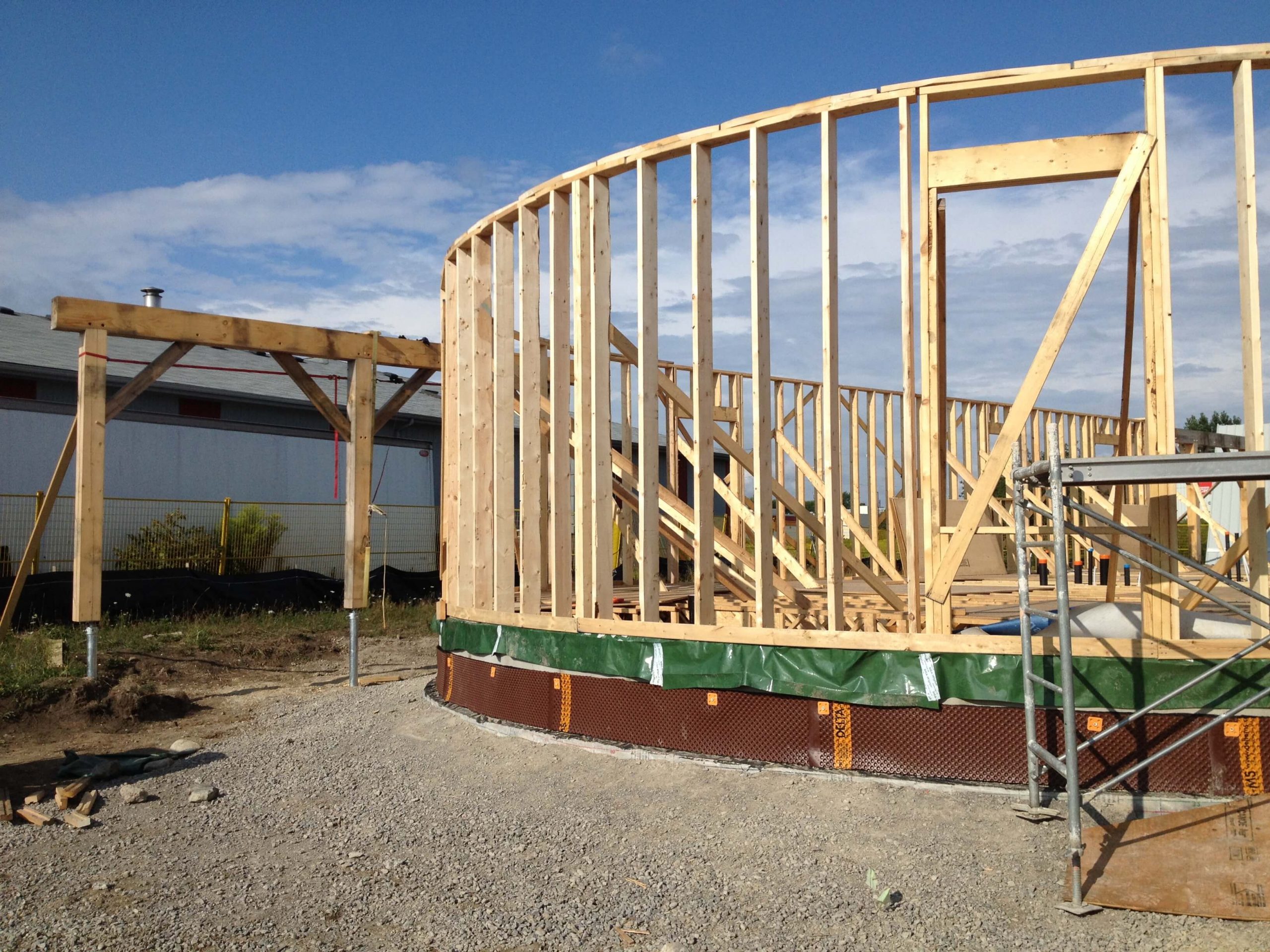The timber frame portion of our project for the teachers’ union rests outside the walls of the building, requiring individual foundation piers for each of the 14 posts. Typically, these would be poured concrete piers each with its own wide footing, resulting in a lot of concrete use and a lot of labour time to dig, form and pour each pier.
As an attractive option to digging and pouring concrete, we decided to use helical piers. This type of foundation is essentially a “ground screw,” consisting of a thick-walled metal tube with a screw plate on the tip. The helical piers are wound into the ground using a hydraulic device attached to a small backhoe. The screw plates are driven down to a depth below frost level and until the hydraulic force required to wind them reaches a pre-determined amount of torque. Once the proper torque has been achieved, the plates have sufficient bearing capacity to handle the loads that will be imposed on them.
Our piers were supplied and installed by Postech Peterborough. They were sized according to the engineered loads provided on our building plans. On the ground, we provided the layout points for the piers and their crew came and performed the installation.
Despite accurate points on the ground for the piers, the piers do not necessarily enter the ground perfectly straight so the tops can sometimes be off line even if the piers were started at the right point. This happened on several of our piers, so next time around, we would definitely make sure we had batter boards and string lines ready so the tops of the piers could be accurately aligned.
The piers are left long, and we cut them to height after the installation. A wide range of pier caps can be used depending on the type of post or beam being attached. Most of the caps use a threaded rod to allow for fine adjustment of the pier height.
One of the advantages of helical piers is there is no digging required, meaning that the site is barely disturbed. The installation of our 14 piers took about 5 hours, making it a quick process. The piers are ready for use immediately upon completion. The galvanized steel used for the piers is a high embodied energy material, but relatively little material is needed compared to concrete or other alternatives.



